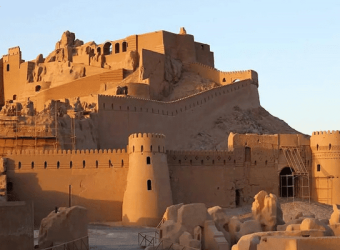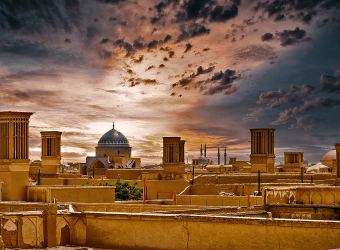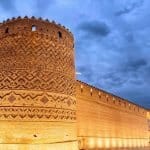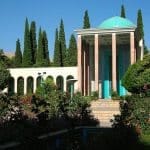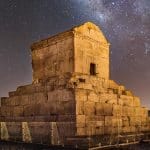Amid the golden deserts of Kerman Province, the majestic Bam Citadel rises like a mirage of history — the world’s largest adobe citadel and one of Iran’s most striking UNESCO World Heritage Sites. Its origins date back to the Achaemenid era (6th–4th centuries BC), yet its true prosperity came much later, between the 7th and 11th centuries AD, when Bam flourished as a vibrant Silk Road trading center, famed for its textiles and craftsmanship.
Constructed entirely from sun-baked mud bricks (khesht) and compacted earth, Bam Citadel exemplifies the ingenuity of desert architecture. The surrounding oasis landscape, sustained by ancient qanat irrigation channels, made life possible in this arid region and turned the fortress into a living city of merchants, soldiers, and artisans.
Although a devastating earthquake in 2003 nearly turned Bam to ruins, continuous restoration efforts have revived much of its historic grandeur. Today, visitors walking through its restored gateways, watchtowers, and alleys experience not just the ruins of an ancient city, but the enduring spirit of human resilience and creativity in the heart of the desert.
By Air
The easiest way to reach Bam by air is to fly to Kerman International Airport (KER), located about 190 km from Bam.
From Kerman, you can continue your journey by private car, taxi, or bus, which takes roughly 2.5 to 3 hours.
Flights to Kerman are available from major Iranian cities such as Tehran, Shiraz, Isfahan, and Mashhad.
By Road or Train
By Road:
Bam is located in southeastern Iran along the Kerman–Zahedan highway.
- From Kerman, the distance is around 190 km (a 2.5–3 hour drive).
- From Tehran, it’s roughly 1,200 km, taking about 12 to 13 hours by car.
Regular buses and shared taxis operate daily from Kerman and other major cities, offering a convenient and affordable option.
By Train:
Bam is connected to Iran’s national railway network.
Trains from Tehran, Yazd, and Kerman run directly to Bam Railway Station, located within the city.
Upon arrival, visitors can take a short taxi ride (about 10 minutes) to reach the Citadel.
Train journeys are comfortable and often preferred by travelers seeking a scenic and relaxing overland experience.
Travel Tips
- Plan your arrival in Bam early in the day to explore the Citadel before the afternoon heat.
- If traveling by car, make sure to have enough fuel and water, as some parts of the desert route have limited services.
- Book train or bus tickets in advance, especially during Nowruz and holiday seasons.
- Many visitors combine Bam, Rayen Citadel, and Kerman in a single trip for a deeper look at southern Iran’s desert heritage.
Bam sits on the edge of the Lut Desert, giving it a hot and dry desert climate. The best time to visit is from October to April, when the weather is mild, clear, and comfortable for walking around the vast mudbrick citadel. During this period, daytime temperatures range between 15°C and 25°C, offering ideal conditions for exploration and photography.
Summers (May to September) can be extremely hot, with temperatures often exceeding 40°C, making midday visits challenging. However, early morning and evening hours remain pleasant for sightseeing.
The Citadel is open all year round, and each season gives Bam a unique atmosphere — from golden winter sunsets to the soft spring breezes that cool the desert air.
Visitors are advised to avoid Nowruz holidays (late March), as well as the anniversary of the 2003 Bam earthquake (late December), when the site may be crowded with local visitors and memorial events.
